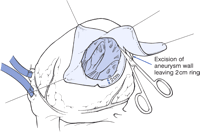|
Profile
Dr Pankaj Goel, is currently working as a Director and Head of the Cardio-thoracic and Vascular (Heart, Lung and Vascular Surgery) unit at the Ivy Hospital, Amritsar.
After completing his MCh in cardio-thoracic and vascular surgery from GB Pant Hospital, Delhi University in 1998, Dr Goel worked at Madras Medical Mission, Chennai for three years. Here he obtained training in complex paediatric cases. Thereafter he went to Australia (Royal Perth Hospital) for further training and experience.
Dr Goel joined the Fortis Escorts Hospital, Amritsar in 2003. Since 2008 , in his capacity as HOD at the same hospital he has done pioneering work and established cardio-thoracic and vascular surgery in the city.
The Goel's unit now routinely performs all types of cardiac, thoracic and vascular surgeries with results comparable to the best centres in the world. Dr Goel is responsible for many firsts in the region.
Dr Goel has several research papers published in indexed journals. He has authored a book on cardiac surgery. He has an original technique for harvesting saphenous vein to his credit.
In 2009, Dr Goel was elected member of the prestigious Society of Thoracic Surgeons , USA. He is also a member of the Indian Association of Cardio-thoracic surgery and CTS Net.
At Ivy Hospital, Dr Goel routinely performs all types of Cardiac, thoracic (including thoracoscopic) and vascular procedures.
Tuesday 11 December 2012
Case of the Month- Post MI Posterior LV Aneurysm- Endoventricular patch Repair.
Monday 10 December 2012
Punjab's First freestyle Porcine Valve Implant.
I therefore implanted a freestyle valve as a complete root replacement technique. This valve is a commercially available pig valve. In a sense it is like transplanting a pig valve in the patient. The advantages are that there are minimal gradients and the heart function recovers promptly. Also the girl need not be on anticoagulation and can have a normal family life. Needless to say the procedure is technically very demanding and time consuming.
At one year follow up the girl is healthy with normal heart function.
The company reps tell me that this is the first time such a valve has been implanted in Punjab!!!
 |
| Freestyle Porcine(pig) aortic valve. |








